Animals rise where humans fail. They are an amazing company, even when all they do is rub their heads against you, begging for pets. And if you want to take them under your wings because they are cute to look at, you must also be ready for the responsibilities that come along.
While most people venture towards cats and dogs, you could always try something different if you have the means for it, such as cows, horses, or maybe something smaller, like chicks. They are super adorable with their yellow fluffy bodies and oblivious looks.
We are here to tell you how to take care of a baby chick at home so that you can come to love them as much as we do.
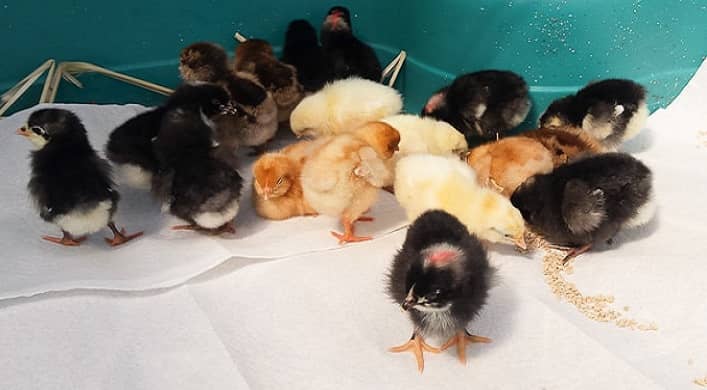
A Guide to Choosing Your Chicken Breed
Before you run off to the nearest farm to get your birds, you should know what breed you want. You cannot just point at a picture and say that you want them because they are fun to look at. At first, decide why you want them.
What Do You Need Them for?
1. Eggs
Do you want to raise your chicks to be egg-laying hens? Locally grown eggs have less cholesterol, more vitamins, and healthy fats. You could include them in your nutritious diet while reducing grocery bills at the same time. For that, you should look for hybrids like Red Rangers, Red Star, and different heritage breeds.
2. Meat
If you want to grow your chicks for meat, look for Cornish crossbreeds.
3. Pets
If you do not want a bird for eggs or meats, they also make good pets. Silkies, Bantams, and Polish are what you should be looking for in general.
Some Factors to Consider
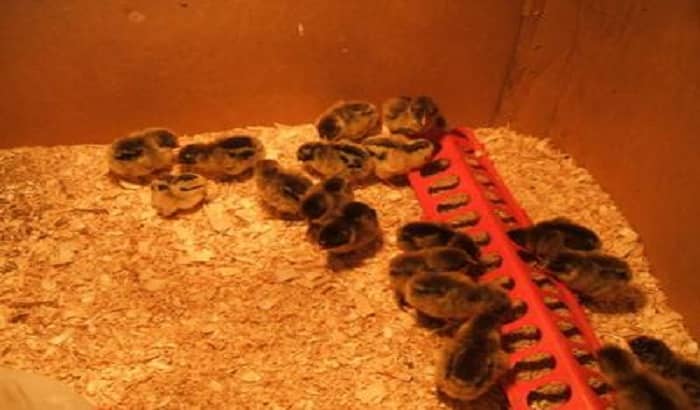
Now that you have decided what you want chicks for, you still must consider a few more factors to ensure you are going in the right direction.
1. Climate
Most chickens prefer colder climates, while some prefer and need heat to survive. That’s why the climate should be the foremost contributing element when selecting the type of bird you want.
If you live in warm and tropical areas, choose a heat-tolerant variety with sleeker bodies that would help them regulate their temperature better. In this case, Mediterranean breeds are the optimal choice.
On the other hand, for colder weather, you need bigger-bodied poults with smaller combs, such as Australorps, Barred Rocks, Cochins, etc.
2. Egg Production
The egg production, including their size, varies from chicken to chicken. If you want eggs to feed your family, most eggs have medium-protection layers that are more than sufficient. But if you want a heavier protection layer, Barred Rocks, Delaware, Rhode Island, Sussex, and Leghorns are your go-to options!
3. Temperament
If you have children running around the house, then you should expect a lot of chasing after the chickens. Children may also want to cuddle and feed them with their hands. Hostile poults are very unsocial and would hate interacting with them. Trust me, ‘angry birds’ are a real thing.
Docile birds such as Austral orps, Brahmas, and Buff Orping tons’ are perfect for this occasion. They are small and do not attack children when ruffled. You might also want to consider Cochins, Silkies, and Bantams.
4. Fancy Breeds
Some chickens are very fun to look at, with crazy hairdos, beards, and wayward feathers that make for a unique and entertaining flock. They are also a hit with the children.
Keep these points in mind when you are choosing your chick breed if you want them to be around for a long time.
Important Terms to Note
We have some terms below which would be helpful when you are looking around for chicks to buy.
1. Straight Run
Straight runs are a combination of hens and roosters. They are more commonly known for being unsexed birds.
2. Sexed Birds
As the name implies, the sexes of the birds are known. You can know whether you are getting a hen or a rooster.
3. Pure Breed
Also known as the straight breed, these poults are bred and produced with their own kind.
4. Hybrid
These birds come from a line of different parental lines.
5. Strain Breed
Hatcheries may have their methods of reproducing birds which are termed as strain or line breed.
6. NPIP
The National Poultry Improvement Plan is a US federal program that tests birds for different diseases and harmful substances. The birds then receive a seal from the program to certify that they are safe to be consumed.
However, they are not exempted from all diseases, so you need to ask specific questions to the breeder to clear up your queries.
Buying the Chickens
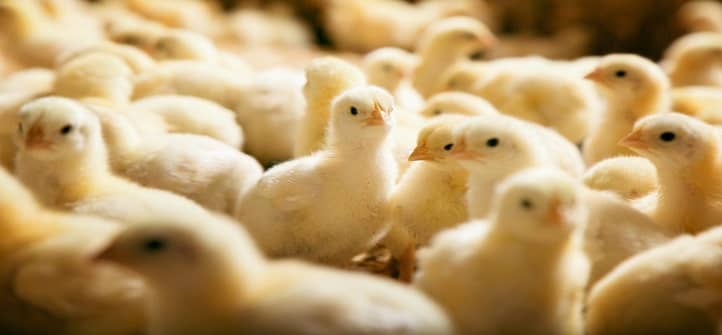
It is time to shop for the chicks! This is the most fun part about getting new livestock, as you want to find the perfect ones to bring home. There are a few options for you to choose from. Without further ado, let’s get started.
1. Online
This is the 21st century, where you can get livestock on the internet besides clothes, shoes, and other things. They are sent through USPS, where they take extra care during shipping.
You need to collect the parcel from your local post office, which you should open right away and check if everything is alright. If you see any problem, make a claim.
2. Feed Store
You can get your poults from the place you get your feeds. Hatcheries use the feed stores as holding areas. It is the best place for finding day-old birds.
3. Local Contacts
If you know a chicken owner nearby, you can always buy your chicks from them. This is a great option because you get to survey the conditions the parent chickens live in, which could hugely affect the health of their babies.
4. Hatch Your Own Eggs
This process takes more work and time. And if you are a first-time chicken owner, many things could go wrong. We do not recommend this, since incubation is a tedious process that no amateur breeder can successfully pull off.
Things You Will Need
Now that you have decided what kind of chick you want and are waiting for them to arrive; you should prepare the place you want to keep them in to be a healthy environment for them to grow. Here, we have a list of things you should need.
Brooder
A brooder is a container your chicks will call their new home. It does not have to be anything fancy. Something as simple as a fruit crate or cardboard box would work. And if you want, you can even DIY one yourself.
First and foremost, it should be secure enough for the baby chicks. Each bird should get enough space to move around. 3-4 square feet per chick is more than enough. More space would ensure that the chicks are healthy and happy. It will limit the spread of diseases and feather picking.
The brooder needs to be placed on higher grounds to be safe from flooding. This would also protect them from other pets you might have or rodents scurrying around in your backyard. You should also check to see if it’s draft proof and has good ventilation.
Chicks have trouble walking on plastic when they are too small as they are more prone to slipping. Lining the walking surface with paper towels will add extra traction to help them keep balance.
Heat Source
Chicks are extremely sensitive to the cold, which might even be fatal to them. So, you have to organize for a heat source, which may come in various forms.
1. Heat Lamps
Heat lamps are the most popular option, as they are widely available. Choose a white or red bulb, which you probably have lying around the house already. It should be noted that the latter is known to discourage bullying, so it might be a better option. This option is the riskiest as it can lead to fires.
2. Infrared Heaters
These lamps generate heat but not light. Chick owners highly prefer these ceramic bulbs, as they allow the birds to adhere to a better day and night schedule.
3. Heating Panels
Heating panels are very convenient to use and extremely safe. They stand on adjustable legs that can be tweaked to change the position of the plates. But extremely cold temperatures can sometimes render them useless, which is when you must use any of the other two forms.
Start by setting the temperature to 95 degrees Fahrenheit, which is the most comfortable for new-born chicks. After the first week, gradually decrease it by 5 degrees per week. Stop when you have reached 55 degrees. You should not reduce the heat anymore.
Bedding
Absorbent wood shavings are ideal as beddings. They should be dry and odor-free for long-term health benefits. Remember to change any wet beddings, especially those near the waterer.
Lights
Just like they need heat, chicks also need 18-22 hours of light when they are born. This amount decreases over time, and you can lessen it gradually each week. Any random 40-watt bulb would work just fine.
Feeders and Waterers
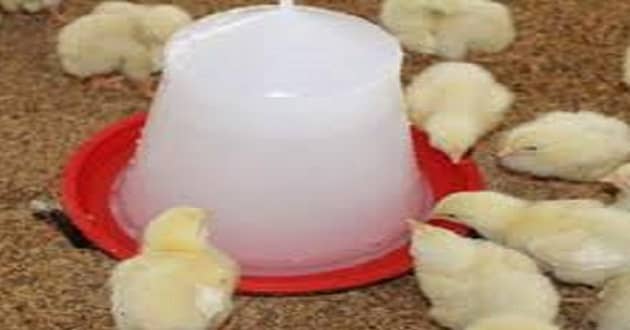
Each poult needs about 4 inches of space for feeding. Rip the top off of an egg carton and fill each hole with feed for the most inexpensive, convenient, and accessible system. Afterward, you can slowly switch to trough feeders.
Place room temperature water in a small container and position it in a corner of the brooder. Also, place it away from the direct exposure of the heat lamp so that it does not get hot.
Litters
Pine shavings are highly affordable and work great as litter. You can also use pellet bedding, shredded paper, grass clippings, dry leaves, sand, chopped straw, etc., as they are easy to allocate and hassle-free to clean.
Litters should also be regularly changed to keep the brooder sanitary and clean. 5 minutes twice a day is not much if you think about it.
How to Take Care of a Baby Chick at Home
They have arrived, and you are now a parent to a clutch of chicks! Don’t be scared and intimidated, as you will ease into the role in no time. But for now, we have step-by-step instructions to help you out.
On the First Day
Step 1: Introduce the Chicks to Water
Place the container they have arrived in at the brooder and slowly bring each chick out one by one. Dip their beaks into the room temperature water you have placed. Focus on hydrating and rehydrating them. The best would be to use heated chicken water for winter to be on the safe side with the chickens. Pretty soon, they will be quenching their thirst on their own.
Step 2: Teach Them How to Feed
Chicks need food for nourishment. Food with at least 18% protein is recommended. The feed should also contain amino acids, prebiotics, vitamins, and minerals besides other components for proper development.
After a few hours of bringing them home, scoop the feed into the egg carton and place it into the container. Gently guide the chicks towards the food and they will quickly catch up.
Step 3: Let Them Rest
The chicks have had a long journey. So, you should let them rest to regain their energy and get accustomed to their new surroundings. We know you want to play with them and acquaint yourself, but have a little patience.
Step 4: Check Them Periodically
Adjust the lighting & temperature and see how they are doing. Chicks cannot tell you if something is not right so you have to watch them to see if something needs adjustment.
-
Too Hot
If the birds are too scattered and have their wings, it is a clear sign that the heat needs to be reduced. They would also be panting and making jittery noises.
-
Just Right
They would be evenly distributed throughout the space and happily walk around, checking their new humble abode.
-
Too Cold
If it gets too cold, the chicks will chirp as loud as possible. They will also huddle together under the light to get the most heat.
-
Uneven Heat Distribution
If there is a draft in the room, the chicks would crowd on the opposite end, as far away as possible.
Daily Caring and Handling
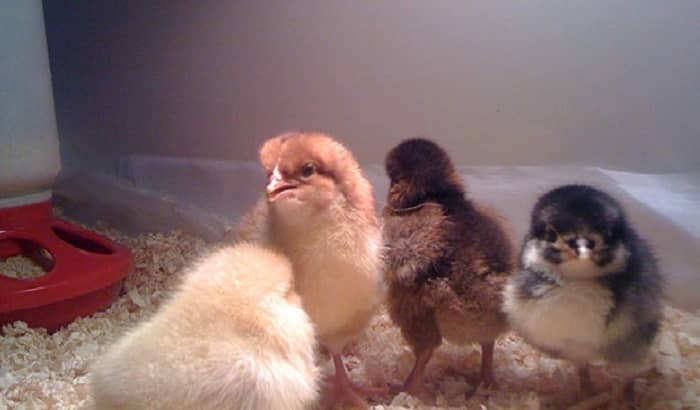
After they have settled in, you can slowly introduce and familiarize yourself and the family. Chicks are very curious by nature, so if you put crumbs in your hand, the curiosity will get the best of them. They might be a little reluctant at first, but very soon they will become your new buddies.
Once they start growing, you should adjust the feed. As chicks mature, they need more calcium to lay eggs. If you want them for meat, increase their protein intake to 20%.
Make sure their homes are clean, and their beddings and litter are regularly changed. A little poop is fine for healthy bacterial growth, but too much can attract bugs and insects. Chicks can develop many nasty illnesses from unclean living environments.
How to Know if They Are Growing Properly
Your precious little chicks will be growing into full-grown chickens in the blink of an eye. So, to ensure they are having the proper development, just keep an eye out for the following points.
1. Picking Problems
When baby feathers get replaced by adult feathers, the birds will start picking around different parts of their bodies. This should happen between 1-3 weeks of age. Check to ensure good ventilation. Hopefully, it would stop by the time they reach 4 weeks. If the problem persists, consult with a veterinarian.
2. Gaining Independence
After 4 weeks, all of their baby feathers should be replaced. They will also be a lot larger and need a wider space. During the next couple of weeks, you will see them exploring their surroundings and testing the boundaries of their freedom, just like teenagers!
As they grow, your duties will decrease. You can let them be on their own. Although, unfortunately, you still must be on poop duty, but not as much as before.
Some Common Illnesses
Chicks very easily succumb to diseases. These are a few of the diseases you might have to face.
1. Coccidiosis
This is a gut disease that inhibits the chick from processing any nutrition. It is also highly contagious, which means all your chicks might catch it. If not treated properly, it could be fatal. You can eliminate the root cause, the growth of protozoan, by giving your chicks feeds containing coccidiostat.
2. Vitamin Deficiency
When chicks are not getting enough vitamins, it can cause the bird’s legs to curl or have bent toes. A simple solution of electrolytes and vitamin supplements should be enough to treat it.
3. Sticky Butt
If the brooder is too warm, it causes the poop to dry like cement and block off the vent. This problem could also prove to be fatal.
Clean the butt of your chicks daily with a small Q-tip and warm water. Wipe them dry afterward, or they might catch a cold.
4. Cross Beak
Scissor beaks, sadly, do not have any cures. The deformity may worsen over time, but it does not affect the quality of life. You can try trimming the beaks or using deep feeders and waterers instead.
5. Starve Out
Chicks should learn to feed and drink as soon as possible so that they know where the food & drink are and can do it at will. If not, they get weak and lose all motivation to survive. That’s why introducing your chicks to water and food is always the first step to handling them.
Final Words
There you go! Once you know what to do and how to take care of a baby chick at home, the process does not seem so daunting anymore. You will settle into the role of a mother so fast that you would barely have time to realize it.
Chicks are adorable companions, albeit a little messy. Cherish your time with them because trust me, they grow up too fast.
